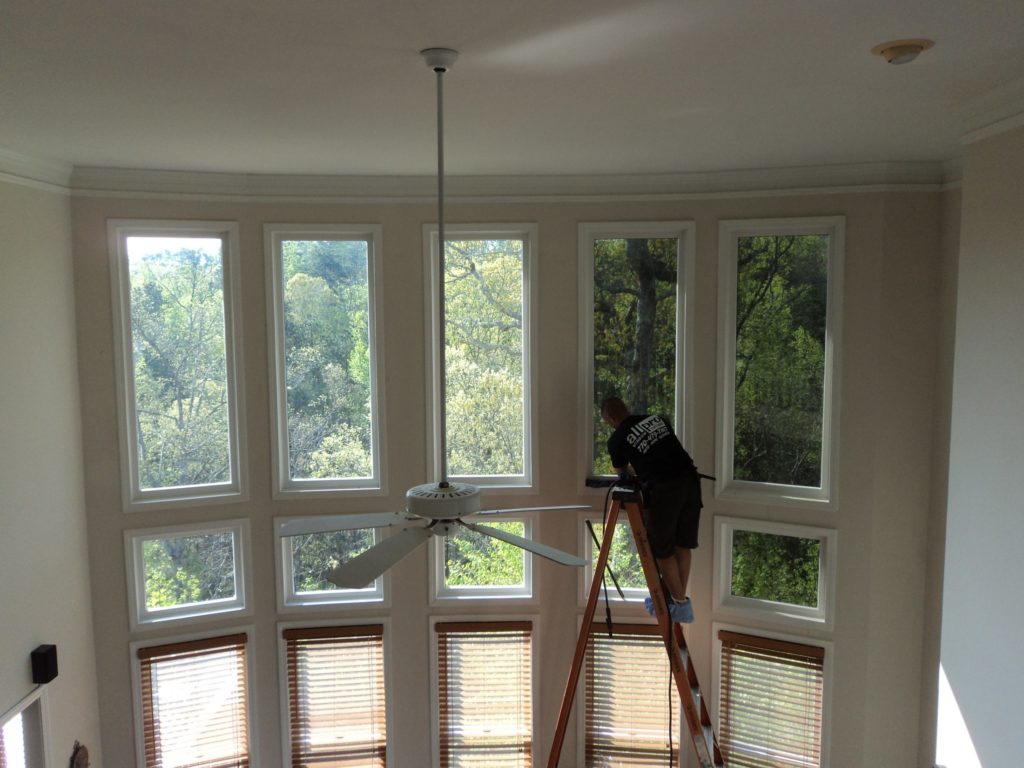Residential Window Tint: Block Harmful Rays Without Sacrificing Natural Light
Wiki Article
Just How Residential Window Tinting Improves Your Home's Energy Effectiveness
Residential home window tinting presents a compelling option for homeowners seeking to improve power efficiency within their living spaces. By applying specialized films to home windows, it properly reduces warm transfer, consequently supporting interior temperature levels and decreasing the need for excessive heating or cooling.Comprehending Window Tinting
Comprehending home window tinting is vital for homeowners seeking to boost both convenience and power efficiency in their space. Residential Window Tint. Home window tinting involves the application of a thin film to the interior or exterior surface area of glass home windows. This movie can significantly regulate the quantity of sunshine and warm that goes into a home, therefore affecting indoor climate conditionsThere are different kinds of window tinting films available, each with distinct homes. For instance, dyed films absorb solar power, while reflective movies deflect it away from the glass surface. Ceramic films supply an equilibrium of exposure and heat denial, making them a preferred selection among homeowners. The performance of home window tinting is usually determined by its Visible Light Transmission (VLT) percent, which indicates how much light can travel through the film.
Advantages of Energy Effectiveness
Window tinting not just enhances looks but additionally plays a considerable duty in improving energy efficiency within household spaces. By minimizing heat transfer with home windows, tinted movies develop a much more secure indoor environment, which can result in substantial reductions in energy intake for cooling and heating. This energy performance translates into reduced energy costs, offering homeowners with substantial long-lasting financial savings.
Furthermore, window tinting enhances the convenience of living areas. By reducing glare and blocking hazardous UV rays, colored windows create an even more pleasurable atmosphere, which can result in boosted wellness for occupants. The defense against UV rays additionally assists preserve furnishings and floor covering from fading, adding to the durability of household things.
Exactly How Tinting Functions
Tinting films run with a combination of innovative materials and innovations designed to manage the amount of solar energy getting in a home. Mainly made up of polyester, these films commonly incorporate ceramic or metallic bits that soak up and show warm. This double capability allows them to dramatically minimize the penetration of ultraviolet (UV) rays and infrared radiation while allowing noticeable light to pass through.The efficiency of home window tinting is determined by its solar warmth gain coefficient (SHGC), which indicates exactly how much solar power is transmitted with the window. Lower SHGC worths are more suitable as they signify article source better heat being rejected. Additionally, window tints can feature a selection of tones, allowing house owners to tailor their aesthetic preferences while enhancing energy performance.
Additionally, these movies function as a barrier, avoiding heat you could check here loss throughout colder months by showing interior warmth back into the space. This thermal insulation effect complements the cooling advantages acquired during warmer months, contributing to a balanced indoor climate year-round. By taking care of solar power efficiently, residential window tinting not only enhances comfort but also plays an important role in decreasing power intake and decreasing energy expenses.
Selecting the Right Tint

There are different kinds of home window films available, including dyed, metalized, and ceramic. Ceramic films provide outstanding warm control without endangering presence and are very long lasting, making them a preferred option.
Visible light transmission (VLT) is an additional important factor, as it shows the amount of natural light that can travel through the colored glass. Property owners need to pick a tint with a VLT that complements their illumination choices while still supplying adequate glare decrease.
In addition, assessing the solar heat gain coefficient (SHGC) can aid identify exactly how well a tint can obstruct warmth from sunshine. A reduced SHGC shows far better warmth control, inevitably improving energy effectiveness.
Installation and Maintenance Tips
Correct setup and maintenance are vital parts in making the most of the benefits of property window tinting. To attain ideal results, it is recommended to hire a link certified professional for installment. This makes sure that the tint is used properly, avoiding air bubbles, creases, or misalignment that can compromise efficiency. Experts also utilize specialized techniques and devices, which can enhance the longevity and efficiency of the color.Complying with installment, upkeep is vital to prolong the life of the window movie. It is advised to wait at the very least 30 days prior to cleansing the colored windows to permit the glue to heal totally.
Attending to these problems quickly can avoid additional damages and maintain power performance. By sticking to these installation and upkeep ideas, house owners can ensure their window tinting proceeds to offer significant power financial savings and comfort for years to come.
Final Thought
In conclusion, property home window tinting offers as a reliable remedy for enhancing power performance within homes. By minimizing warmth transfer and blocking hazardous UV rays, home window films contribute to reduce energy consumption and enhanced indoor convenience. The selection of proper tinting materials, in addition to appropriate installment and maintenance, further makes best use of these advantages. Ultimately, home window tinting represents a sustainable financial investment that not only decreases utility costs but likewise promotes a comfortable living setting throughout the year.Window tinting involves the application of a thin movie to the inside or exterior surface of glass windows. By minimizing warm transfer via home windows, tinted films produce a much more secure indoor environment, which can lead to considerable reductions in power usage for heating and cooling.The efficiency of home window tinting is gauged by its solar heat gain coefficient (SHGC), which indicates exactly how much solar energy is transferred via the home window. By managing solar energy effectively, property home window tinting not just improves convenience however additionally plays an essential duty in minimizing energy usage and reducing energy costs.
By minimizing warm transfer and blocking harmful UV rays, window movies add to decrease power intake and enhanced interior convenience.
Report this wiki page